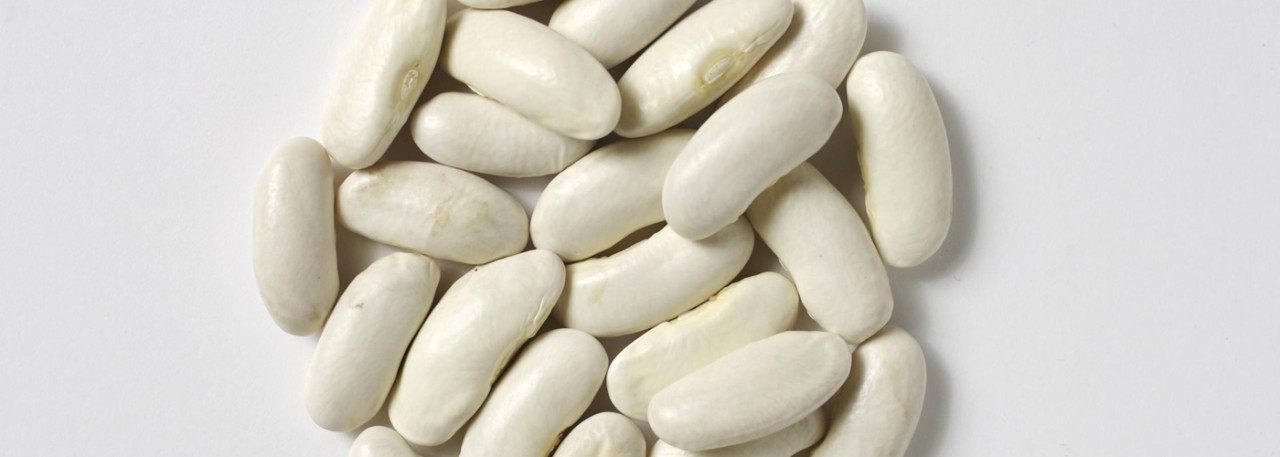.png.transform/rendition-xs/image_image%20(1).png)
Faba Asturiana PGI
Dried, shelled beans from the Phaseolus vulgaris L. species, which comprises the traditional Granja Asturiana variety.
Tasting notes
Whole grain with a fine, soft outer skin, a creamy albumen and a buttery consistency on the palate, only very slightly or not at all grainy or floury.
Other notes
Creamy white in color, kidney-shaped, long and flat. Large in size. About 100-110 beans/100g (3.5 oz) of seeds.
Characteristics (Contents per 100 g):
- Humectants:
- Ash: 3 - 5
- Carbohydrates: 50 - 70
- Calcium: 0.04
- Protein: 20 - 30
- Magnesium: 0.09
- Fat: 0.3 - 1.5
- Iron: 66.44
- Total Fiber: 4.17
Packaged dried beans should fall within the Extra and Primera categories and should meet the minimum requirements - whole grains, healthy, free from mold, botrytis and insects, and with a maximum humectants content of 15%.
Production / Processing method
Sowing takes place from April to June, weather permitting. The quantity of seed used ranges between approximately 45 and 60 kg (99 – 132 lbs) per hectare (2.47 acres). The seed is generally cultivated using an unirrigated system.
All the seed is produced in Asturias and is then selected through manual procedures, based principally on the size, shape and color of the grains. Nowadays, farmers have access to standard seed for some of the recommended varieties.
During cultivation, once the plants have sprouted, manual clearing usually takes place to eliminate excess plant stems, thus encouraging crop development. Two or three runs with the tiller are used to clear weeds, and herbicides are not commonly used.
As this is a bean that can grow indefinitely, it needs a stake. Various types of stakes are used, from the traditional corn stem stake to modern systems that combine stakes, wire and rope or net and metal poles of varying widths and lengths. The process of staking the plant is very labor-intensive, as it is a manual job and must be done at a particular time during cultivation to ensure that the plant does not run along the ground.
Finally, hilling up is carried out. This encourages the roots to develop, especially when the crop is grown on corn stems as it anchors them more securely and stops the cereal from coming into leaf.
Harvesting takes place when the pod is dry and the grain is hard. It is done manually, either pod by pod or by pulling up the whole plant. In both cases, the harvested crops are left to air in a well-ventilated area for at least a month. Once the beans are dry and hard, shelling takes place, which is performed when the grain is dry and mature and can be done manually or mechanically. During the cleaning process, chaff and defective grain are removed.
Once the beans reach the warehouses or packaging floors, they are subjected to a process that consists of the following stages:
- An intrinsic quality control of the raw materials to standardize the different batches, which includes a cooking time analysis.
- Cleaning by air and vibration to remove foreign bodies.
- Sifting and selecting to remove the defective beans.
- Calibration, in which the products are sorted by size, as only beans of the same size will have the same cooking time.
- Packaging: putting the beans into the different containers, using automatic and semi-automatic dosing units.
- Labeling: attaching labels and warnings to the container.
Geography / Relief and climate
The agricultural soils in which this variety is usually grown are generally brown lands situated on the fertile plains of the fluvial terraces, with good permeability and a low content of calcium carbonate.
The orography of the area is very uneven with huge physiographical contrasts. From south to north, four morphological entities can be distinguished: the central coal basin, formed by the valleys that run into the Ovido basin, the pre-coastal channel that constitutes a depression caused by the Alpine faults used by the river network to carve out the modern valley that separates the inland mountains from the coastal heights, the mountainous coastal area, in which the Cuera mountain stands out, and the flat, terraced coastal areas.
The area's geographical location provides the region with temperate, cool winters and abundant rainfall throughout the year, with a fairly moderate maximum winter temperate – all typical characteristics of a maritime climate.
The coastal strip is characterized by two types of climate: Maritime Mediterranean and Hot Maritime. Two other types of climate alternate In the pre-coastal channel and in the central coal basin: Temperate Mediterranean and Temperate Hot. The inland areas have a damp Patagonian climate, and temperatures during the cultivation period range between 15 and 30ºC (59-86ªF).
Regulatory Council
Consejo Regulador de la IGP Faba Asturiana
Centro de Iniciativa Empresarial
Polígono Industrial de La Cardosa
33820 Grado (Asturias)
Tel: (+34) 985 751 800
info@faba-asturiana.org
www.faba-asturiana.org
Sources:
- Spanish Ministry of Agriculture
All the seed are produced in Asturias.


- Faba Asturiana 1
- Faba Asturiana 2

Grado (Asturias)
